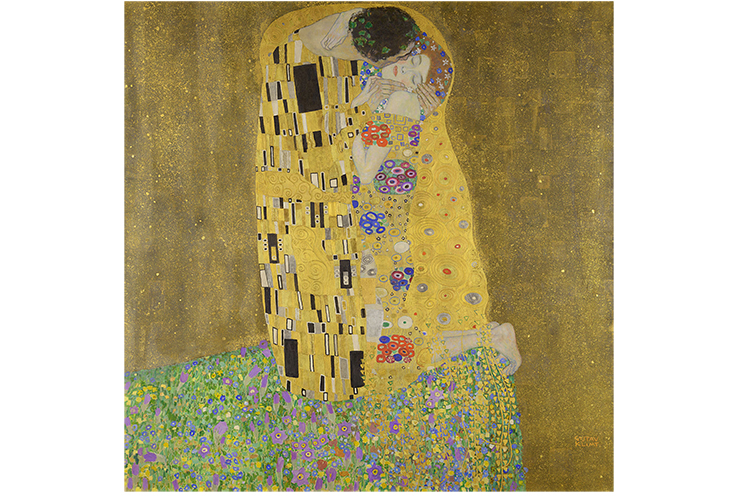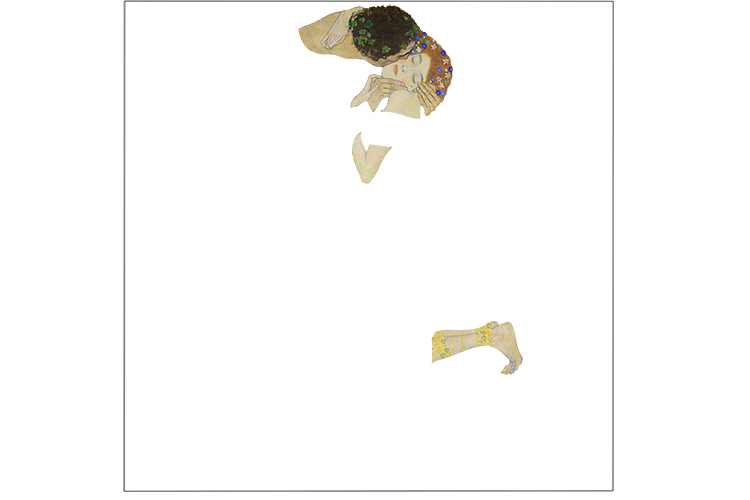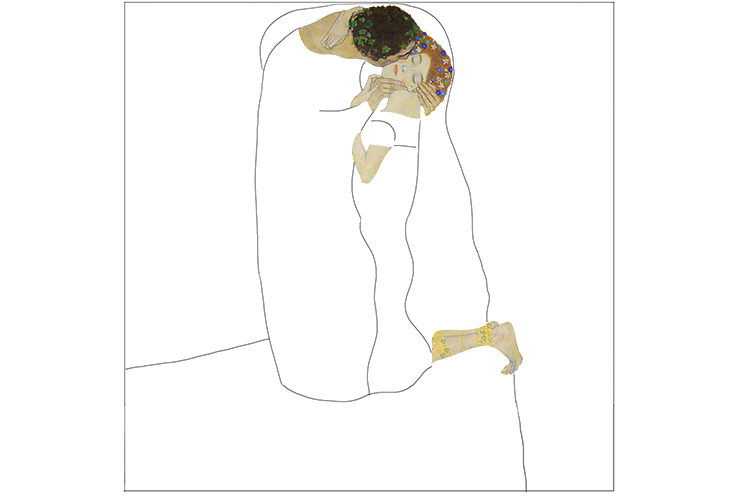Gustav Klimt Art Project
To create a piece of artwork reflecting that of Gustav Klimt, it is helpful to observe one of his images as a reference. For this project, we will look at Klimt's painting The Kiss.

As you can see in the painting, Klimt uses a series of intricate, repetitive patterns. Almost all of the canvas is heavily patterned or clad in gold; all that remains are the areas of flesh showing – the hands, faces and feet of the subjects. This project is a study of pattern, so the smooth, delicately painted areas of skin can be kept as a link to the original.

Print out a copy of the original painting, and cut around the areas of skin to use on your artwork. Stick them onto the paper or canvas you are going to use for your work as shown above. As you can see, it's quite difficult to see what's going on in this image – the heads, arms and feet appear to be floating in mid-air. To help resolve this, we advise adding some lines as a guide.
If you are feeling brave, try to draw the guidelines yourself, showing the shape of the couples' flowing clothing and the floor below them?
Alternatively, use this printout with the lines already marked out for you.

Now the technical side of the project is complete, this is where the fun begins. As we stated before, this is a study of pattern. The wide variety of marks, symbols and patterns Klimt used is almost endless so this is an opportunity for you to go crazy with pattern. Before we continue, here are some examples of Klimt's patterns from just a small selection of his paintings – the variety is amazing!

Use the blank image you have created or printed and start adding pattern, the more colour and detail the better. You may wish to include some of Klimt's patterns, or go crazy and experiment with a completely unique design that showcases your own ideas and techniques. If you feel the need to draw out the patterns you want to use with a pencil first, you can, but the fun is in the expressive marks so why not go straight in with the colour? Here's our version, both with and without colour.

Gustav Klimt




